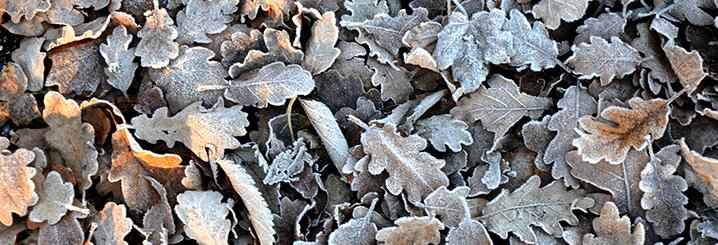How to prune cherry laurels

If you are reading this article you probably have a lush cherry laurel hedge in your garden, or you frequently have to prune them as part of your job.
The cherry laurel or common laurel (Prunus laurocerasus) is a highly adaptable evergreen plant that even helps to counteract air pollution. It is often confused with the similarly named bay laurel. Widespread and used for ornamental hedging, it is perfect to maintain as a perfect formal hedge, i.e., sheared into a well-defined geometric shape.
How to prune the cherry laurel properly? Let's find out.
When to prune the cherry laurel
Besides its shiny and leathery, dark green leaves, the cherry laurel is also known for its fast and vigorous growth, so it does not tend to keep its shape, especially if pruned at the wrong time of year.
If you prune a cherry laurel in the winter, the plant will respond by quickly producing abundant vegetation in spring. This means that besides immediately losing the shape you gave it through careful pruning, the hedge will be more vulnerable to powdery mildew, a fungus that feeds on growing plant tissues.
So, when is the right time to prune cherry laurel hedges? The optimal period is late spring/early summer after flowering, from the end of May into June. At this time of year, the plant responds to cutting by producing new vegetation more slowly and less abundantly, thereby maintaining the beautiful, regular shape you gave it for longer.
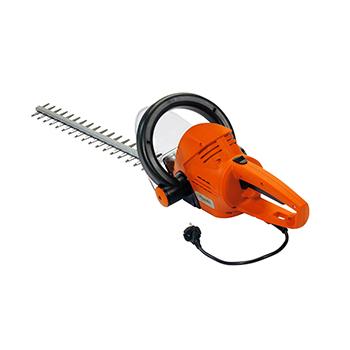
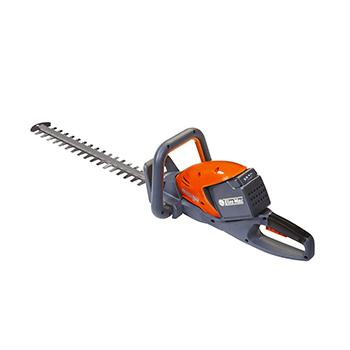
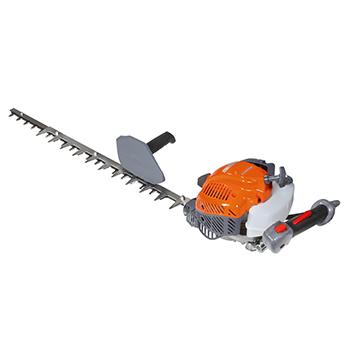
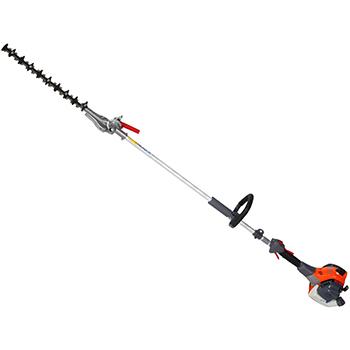
How to prune cherry laurels
Now that we know the best time to prune a cherry laurel, let's find out how to prune it. When pruning hedges, keep in mind the old adage that "less is more": Limit pruning to the removal of dry, broken or diseased branches and only cut the minimum amount necessary to keep foliage in check and maintain its overall shape. Pruning also keeps a hedge compact so that it doesn’t have a hollow appearance: cutting the topmost branches causes the plant to develop outward, thickening the foliage under the crown.
You can then prune sparingly using a hedgetrimmer, before finishing the job by hand with pruning shears. On the subject of hedgetrimmers, you can choose the model that's right for you among the Oleo-Mac range of electric hedgetrimmers, such as the quiet-running HC 750 E model: with its 70 cm double blade (featuring sharp teeth along both edges), it is suitable for thinner and less dense hedges.
If your garden is surrounded by houses, it’s wise to choose a tool that’s not excessively noisy, such as an electric or battery-powered hedgetrimmer. Oleo-Mac offers you the HCi 45 model complete with battery and charger, which gives you 2 hours of running time between recharges.
If you prefer a professional model, suitable for more challenging hedges and intensive use, the range of petrol-engine hedgetrimmers includes the HCS 247 P with 0.75 kW power rating and 75 cm single steel blade (with cutting teeth along one edge only). Among the professional petrol engine hedgetrimmers you will also find shaft hedgetrimmers including the BC 241 HL with 0.9 kW power rating and double-edged blade, which is adjustable through 12 positions from 0 to 180°. Shaft hedgetrimmers make it easier to prune hedges on uneven or steep terrain, or where the vegetation is difficult to reach.
For an overview of the various models, you can read our article entitled “Electric, battery-powered or petrol engine hedgetrimmer?”.
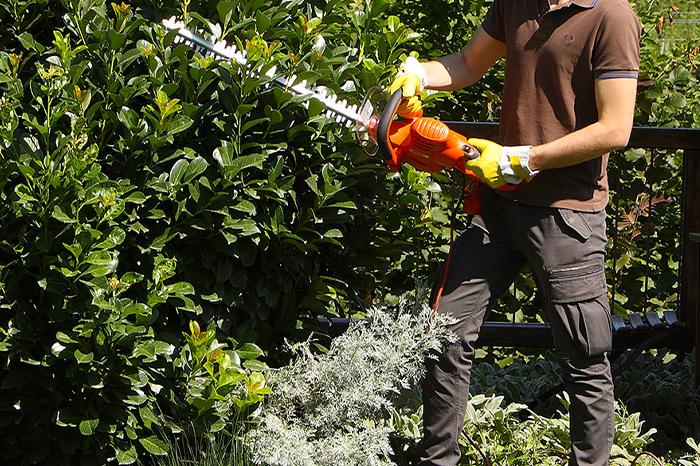

How to use a hedgetrimmer to prune cherry laurels
To prune a cherry laurel hedge, cut the sides first and the top last.
For side cutting, proceed as follows:
-
If you have a double-bladed hedgetrimmer – like the HC 750 E, HCi 45 and BC 241 HL – cut the hedge with an arc-shaped sweeping motion from bottom to top and vice versa, using both sides of the blade.
-
If, on the other hand, you have a single-bladed hedgetrimmer, always cut from the bottom up.
To prune the top of the hedge, tilt the hedgetrimmer (by 5-10°) with respect to the horizontal trimming plane. Cut slowly, especially if the hedge is very thick. Worried about ending up with an uneven finish? Help yourself by creating a reference system: plant poles alongside the hedge with a length of string tied between them: the height of this line marks the correct trimming height.
One more tip: to ensure that the hedge also remains thick lower down, close to the ground, prune the hedge so that it’s wider at the base and narrower at the top. In practice it needs to have a trapezoid profile: that way, the sides of the plant receive more sunlight over the entire surface, promoting the growth of low-lying branches which would otherwise be overshadowed.

